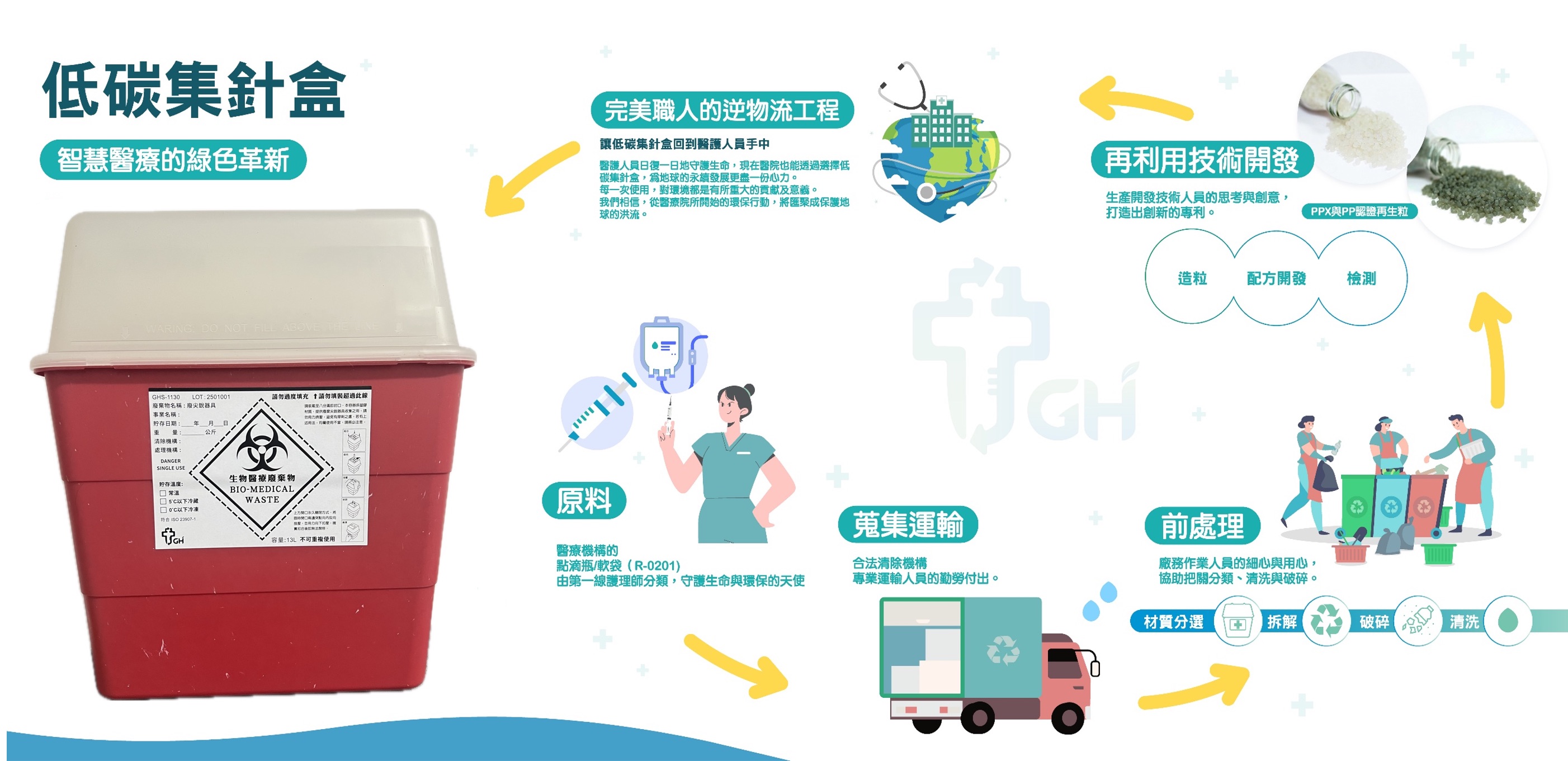Green Hung utilizes patented technology to recycle non-PVC waste soft bags and IV bottles into sharps containers, reducing the incineration of medical plastic waste and lowering carbon emissions.
Intravenous (IV) soft bags are a common consumable in medical settings, with approximately 33 million used annually in Taiwan. Due to concerns over potential plasticizer leaching from PVC-based IV bags, the market has shifted toward non-PVC composite materials for IV soft bags. However, these composite materials pose significant challenges for downstream recycling. Over the past decade, most of these bags have instead been incinerated or otherwise treated, resulting in increased carbon emissions and uncertainties in waste traceability.
In recent years, Green Hung has been dedicated to promoting the recycling and resource utilization of medical waste plastics, with a focus on recycling intravenous bottles
and waste soft bags from medical institutions. The company has developed specialized technology for material recycling and processing, and is the first in the industry to achieve the recycling of medical composite soft bags. Green Hung has collaborated with the Tri-Service General Hospital in Neihu, Taipei, to establish a resource recycling system. Frontline nurses and cleaning staff conduct initial sorting to ensure the reliability of the source. The materials are then processed by Green Hung through classification, shredding, washing and separation, drying, and pelletizing. The recycled materials are ultimately used to manufacture low-carbon sharps containers and other medical auxiliary products. The entire recycling process is third-party verified to ensure traceability and is also certified for product carbon footprint.
The low-carbon sharps container is just the beginning. Green Hung looks forward to leveraging the excellent impact resistance of this recycled material for a wider range of applications in the future, such as snap-fit plastic components for hospital beds or wheelchairs, high-impact automotive bumpers, and construction safety barriers. This approach aims to expand the use of recycled plastics across different industries, enhancing their circular value.

Benefits
- The low-carbon sharps container reduces the use of primary materials by 37%.
- Compared to primary materials, it lowers the product′s carbon footprint by 20%, equivalent to an annual reduction of approximately 500 metric tons of CO₂ emissions.
- Compared to incineration, this recycling model can save about 40% in processing costs.